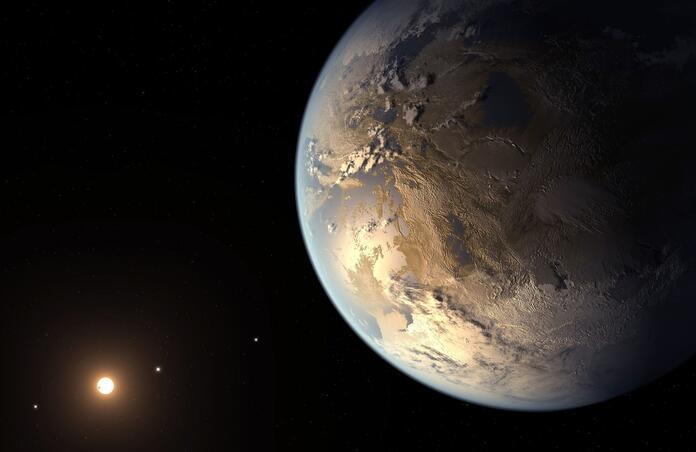Insights into Observations on Wasp 39b from Contributer - Sergey Yurchenko

Dr Sergey Yurchenko is currently a professor at the University College London, and has recently been involved with the series of publications that analyse the high-resolution spectroscopic data gathered by the James Webb telescope, during a transit of Wasp 39b across its home star, Wasp 39. He has kindly agreed to provide some further insights into the publication with regards to his own involvement, and his expectations for what the future bears as a result of these studies.
Yurchenko is involved with the production of the molecular data that was used by these publications, which then led to the assumption that the peak identified at 4.05µm was due to the direct detection of Sulphur Dioxide. Back in April of 2016, Yurchenko worked on a study led by Dan Underwood, which resolved the energy levels of the SO2 molecule, data which is naturally invaluable to understanding the source of certain spectroscopic signals. This is in addition to his credit within the studies which resolve the SO and SO3 molecules, published in 2022 and 2014 respectively. The former in particular was the PhD thesis of Dr Ryan Brady, a current student of Yurchenko’s, and another credited author of the paper.
Yurchenko and his teams primarily focus on filling any gaps in understanding when it comes to molecular data, “SO for example, before James Webb, we realised that SO is an important molecule, but the data coverage was rather poor and we started working on this.” As such, they naturally get involved with many studies that require this data directly, as well as any further consultation and calculations they may be requested as part of this. He states that his and Brady’s involvement began with their work on SO, with the studies on SO2 and SO3 naturally filling in any further gaps. These can all be now found on the exomol database.
While the big discovery in the recent series on studies were the implications of the atmospheric chemistry on Wasp 39b due to the discovery of SO2, Yurchenko explains why his team first got involved due to their work with SO. “If you have SO2, you must have other species. You need to analyse them all to understand the chemistry of this atmosphere.” Its not just the particles themselves that must be considered, but their interactions and reactions as well, which is why data on all Sulphur oxidation states was so crucial to employ.
Towards the end of our conversation, Yurchenko gave some exciting insight into where these publications will lead for him, as well as for the wider scientific community. For him, he says that he doesn’t expect to be working any further on this specific cycle of data released by the James Webb, but instead wait for further releases and decide from there where his efforts would be most useful.
A large surprise and likely the biggest lingering question in this study concerns the null detection of any H2S signals. The chemical models show it is a crucial step of the process which leads to SO2, and yet the spectroscopic data highlights no peaks in correspondence with this. Yurchenko states that he believes that the next steps taken from these studies will aim to explain this observation, be it through more detailed analysis of current spectra or further in the future, when we are able to retrieve even higher resolution data.
Alongside this, future studies will likely aim to confirm or deny the proposed chemical mechanism, by analysing the spectra of other exoplanets with similar conditions to Wasp-39b, to see if SO2 may again be detected. This would suggest that the pathways are true. Finally, he mentions that with these new revelations, he believes that the approach to future observations may be changed, as the CO2 feature which was also confirmed by this should now more prominently be considered to be definite, if spotted.
--
Relevant papers: D. Underwood et al, Rotational spectrum of SO3 and theoretical evidence for the formation of sixfold rotational energy-level clusters in its vibrational ground state, 2014, The Journal of Chemical Physics
D. Underwood et al, ExoMol molecular line lists - XIV: The rotation-vibration spectrum of hot SO2, 2016, Monthly Notices of the Royal Astronomical Society
R. Brady et al, An ab initio study of the rovibronic spectrum of sulphur monoxide (SO): diabatic vs. adiabatic representation, 2022, Physical Chemistry Chemical Physics
Cover Image: NASA
